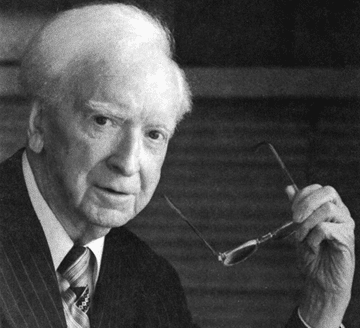A Passion for Souls: Our Continued Journey in Global Missions

by Verdell Goulding
Goulding discusses his church’s journey to become more “synergistic”, proactively seeking God’s will for a global mission program to ensure the good stewardship of the resources God entrusts to them.

Real spirituality always has an outcome. There will be a yearning and a love for souls. —Oswald J. Smith
Having applied four times for service in overseas missions, Oswald J. Smith, founder of The Peoples Church in Toronto, Canada, was turned down each time due to his lack of qualifications and chronic health issues. Initially discouraged, he eventually began to sense God’s call upon his life to “be a missionary to the whole world” and resolved that, “Even if I live in one place, I must reach beyond my local parish to the world” (Neely 1982, 79).
He took that calling seriously and spent the remainder of his life appealing to North American masses to develop a heart for local revival and global missions. Some of his more defining statements in the early part of the twentieth century (e.g., “Why should anyone hear the gospel twice, before everyone has heard it once?”) have left a mission legacy that continues to define the core aspects of The Peoples Church today.
From “Supporting” to “Synergistic”
I joined the staff of the mission department of The Peoples Church a few years ago, and in many ways what I discovered reflected the tremendous mission passion, zeal, and heritage that had been handed down to us as a congregation. We were at that time giving around $2 million to missions each year (which represented nearly forty percent of our total church giving). We were supporting 379 missionaries through 76 agencies, and giving priority to a three-week global outreach conference for our congregation each year. Missions was obviously a core part of our identity, and in many respects we appeared to be an above-average “missions” church.
Beneath the surface, however, I was also disturbed by much of what I saw. As I began to read through the reports sent by our supported missionaries, there were many things that bothered me. For instance, the frequency of reports varied greatly and we hadn’t heard from some people in years. Others did not seem as productive in their work as I had expected—sometimes it was even difficult to determine exactly what it was they were trying to do, much less whether or not they were doing it well!
We had a mission committee to help us make funding decisions, but this was mostly a reactive process in which we assessed applications as they were presented to us, rather than proactively looking for where and how God wanted us to be involved in global missions. There were also no standard criteria by which these assessments were made and we did not have a clear strategic vision for what we wanted to accomplish, much less a plan of how best to do it.
We were, in the words of James Engel and William Dyrness, a mission “supporting” church (Engel and Dyrness 2000, 121). We began a journey to become more “synergistic”, proactively seeking God’s will for our global mission program to ensure the good stewardship of the resources God entrusts to us, then seeking and strengthening partnerships with missionaries and agencies to help us accomplish those purposes and strategies throughout the world.
Establishment of Core Purposes
The first step was to establish core purposes for our ministry. After all, how can we know if we’re doing all that God wants us to do unless we clearly articulate what we believe God wants us to do? These purposes were defined as:
1. The practice of good stewardship—to be good stewards of all God entrusts to us (Matt. 25:14)
2. Congregational mobilization —to educate, equip, and mobilize our congregation to fully participate in the task of global missions in accordance with God’s will for their lives
3. Resource for global missions—to be a catalyst and resource for Canadian churches and mission agencies, encouraging and facilitating their increased involvement and effectiveness in global missions.
These core purposes, previously vaguely assumed but undefined, now serve as the basis for all of our global outreach endeavors.
The Practice of Good Stewardship
To achieve the first core purpose, we undertook the most obvious and urgent of our tasks—a complete reassessment of all of our supported missionaries and agencies. We developed a set of key assessment criteria that all of our partnering ministries had to meet. These included:
1. Sustainability, where the removal of a small number of donors would not jeopardize the work of the missionary or success of the project.
2. Accountability, where (a) the person or project was affiliated with a Christian agency that was registered and in good standing with the Canadian Revenue Agency (which oversees the tax-exempt status of charities within Canada); and (b) proper reporting measures were in place within the organization and in their relationship with donors.
3. Expectation of ministry effectiveness, where we looked at a combination of factors such as: clearly-defined needs and ministry goals, realistic implementation plan, measurable progress and outcomes, relevant and contextual methods of ministry, strategic relationships with national partners, and an intangible but vital sense of God’s “calling” upon the person or ministry.
4. Strong connection to the local church, where appropriate opportunities were being provided to share Christ and disciple believers. Ministries needed to be holistic, not simply social in nature.
As we reassessed our partnerships, some did not meet our new criteria. There were some cases, in fact, in which we discovered a nearly complete lack of accountability and misuse of funds which bordered on dishonesty. At other times, there were clearly good intentions, but the person or agency was simply lacking the capacity needed to oversee and perform the work well. These were initially the most difficult conversations—people’s hearts were in the right place and they couldn’t understand the need for any objective assessment criteria. The shocked responses we received from these ministries were along the lines of “but we need to help starving children” or “there are people waiting to hear about Christ.” These of course were needs we wanted to address as a church, but we wanted to strive toward meeting those needs in more responsible ways that would increase the likelihood of successful outcomes.
Congregational Mobilization
By this point, we were well on our way to getting to where we wanted to be in terms of financial stewardship, so we next set our sights on the goal of congregational mobilization.
Short-term teams. We had been sending short-term teams from our church, but there had been no organized structure to how we did this. There are many horror stories of short-term missions not being done well and the consequent damage that can be done on the field (e.g., Corbett and Fikkert 2009). In hopes that this would be minimized and our short-term mission experience would be positive for all involved, we established several guidelines. These included:
• Partnering with relevant mission agencies with experience in that geographical region and type of ministry (rather than trying to do it on our own and repeating mistakes that had already been made and learned from by others)
• Working with the partnering agency to establish three to five-year goals as a way of deepening our partnership and enabling us to provide a more meaningful long-term contribution
• The selection of team leaders with a history of local engagement in our church and community and appropriate cross-cultural experience in the target location
• A commitment by leaders to oversee the team until others could be developed for the future (typically a commitment of three years)
With these guidelines, we began by sending three teams per year in 2010, five in 2011, and nine in 2013. We are working toward a goal of fifteen to twenty teams per year within the next couple of years.
Global initiatives. This past year we have also begun developing a number of “global initiatives,” which we define as specific areas of global missions that we believe God desires us to focus on as a church. Our goals for these initiatives are that every member of our congregation will know: (1) what the key needs are in each of our initiatives, (2) how we as a church are helping to address these needs, and (3) how he or she as a member of our church can be actively involved. Our desire is to eventually have five to six global initiatives; we started in 2013 with three: vulnerable women & children, human trafficking, and unreached peoples.
There were two key drivers for implementing these new areas of focus. First, as we continue to support a large number of ministry partners (138 missionary units through 64 mission agencies in 40 countries), it is impossible to effectively educate and cast vision to mobilize our congregation for increased engagement with needs in all these ministries. So it became necessary to be more selective in the mobilization opportunities presented to our congregation. Our global initiatives provide a good starting platform for this, addressing human resource needs of key agency partners while urging our congregation toward deeper levels of engagement.
Second, we often receive encouragement from people about our great mission heritage and the level of resources we allocate to global missions each year. However, for any church (including ours) the important factor in giving is not the absolute amount of resources being allocated to missions, but rather the amount of resources relative to the church’s capacity to give. We are currently giving about $2 million per year to global missions. To many, that seems like an impressive number. However, it is not impressive if our capacity to give is actually higher. That is the whole point behind Christ’s teaching of the Parable of the Talents.
For this reason, we have taken a step of faith and have asked our congregation to continue in their support for our current partnerships and to increase their giving to a level that will also meet the needs of our newly-introduced global initiatives. In this way, we hope to get a better gauge of our capacity to give and ensure that we are giving accordingly.
Resource for Global Missions
One of our core values as a church is “collaboration”, and we recognize that the majority of churches in Canada do not have multi-million-dollar mission budgets as they seek to engage their people in global missions. This raises the question, “How can we use the resources God has entrusted to us to be a help and resource to others?”
“Global” missions includes our city, country, and world. We cannot ignore the magnitude and severity of global needs to focus solely on our own backyard, but neither can we ignore the vital spiritual needs immediately around us. Both demand attention and this has to be reflected in the partnerships we establish. We have recently hired a church networking pastor to build our capacity to resource third-party church plants within our city. We’ll also be hosting a number of church and global mission agency symposiums over the next year to identify ways in which we can better partner together and seek mutually beneficial ways to increase our effectiveness in global missions.
Where Do We Go from Here?
Our journey is continuing. This past year, we hired a community outreach director to encourage our congregation to better meet the needs of our local community. We are also looking to hire a missions engagement coordinator to provide adequate oversight and care to church members as they grow in their level of mission engagement.
God’s love for the world is too great for us not to strive for excellence in our mission endeavors. The magnitude and severity of global need are also far too big for any one church to address. These things together require us to seriously reflect on the role God has set aside for each of us to play in the imperative of global missions, and to be vigilant in adapting and improving our methods in a changing world. Our prayer at The Peoples Church is that we will have a passion for souls that continues to stir our hearts into action and produce fruitful and lasting results in in today’s world.
References
Corbett, Steve and Brian Fikkert. 2009. When Helping Hurts. Chicago: Moody Publishers.
Engel, James F. and William A. Dyrness. 2000. Changing the Mind of Missions: Where Have We Gone Wrong? Downers Grove, Ill.: InterVarsity Press.
Neely, Lois. 1982. Fire in His Bones. Wheaton, Ill.: Tyndale House Publishers, Inc.
….
Verdell Goulding serves as the global outreach director at The People’s Church in Toronto. He formerly worked in the field of medical research.
EMQ, Vol. 50, No. 1, pp. 98-102. Copyright © 2014 Billy Graham Center. All rights reserved. Not to be reproduced or copied in any form without written permission from EMQ editors.


